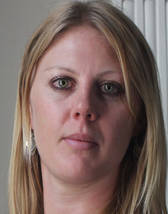What Can Work (and What Has Not Worked) in Women-Centric P/CVE Initiatives: Assessing the Evidence Base for Preventing and Countering Violent Extremism
This paper assesses the effectiveness of women-centric P/CVE initiatives, and highlights what can work (and what does not).
This paper focuses on women-centric efforts in preventing and countering violent extremism (P/CVE) – in other words, interventions that seek to work with, or target, women and girls specifically. The use of ‘women-centric’ rather than ‘gender-centric’ is deliberate. While understandings of gender norms, relations and behaviours underpin many of the assumptions explored in this paper, the explored initiatives all focus on engaging women. Interventions and accompanying literature on the specific roles of men in P/CVE are hard to come by.
The increasing commitment to incorporating ‘gender’ at the highest institutional levels of international counterterrorism over the past 20 years has focused on women’s roles in terrorist groups and in preventive security efforts. In 2000, the UN passed UN Security Council Resolution (UNSCR) 1325, a ground-breaking resolution on women, peace and security that advocated the role of women across four security-related pillars in relation to conflict. In 2015, UNSCR 2242 called for the inclusion of women in devising P/CVE programmes. The UN Secretary-General’s 2015 ‘Plan of Action to Prevent Violent Extremism’ included a pillar dedicated to the role of women and girls, and urged member states to mainstream gender perspectives, empower women and women-led organisations, and strive for gender equality. In 2017, UNSCR 2396 on foreign terrorist fighters emphasised that ‘women and children associated with foreign terrorist fighters returning or relocating to and from conflict may have served in many different roles, including as supporters, facilitators, or perpetrators of terrorist acts, and require special focus when developing tailored prosecution, rehabilitation and reintegration strategies’.
Part of the increased emphasis on including women in P/CVE policy and practice is linked to the evolving security landscape – in particular, the emergence of the Islamic State and the waves of migration of predominantly young men and women to its so-called ‘Caliphate’.At the global level, this has been one factor in an increasing number of initiatives focusing on the capacity of women, and particularly mothers, to spot and react to extremism in their families or communities, tackling the root causes of violent extremism, including in relation to gender,and taking on a more active role in the community, family and economy. Simultaneously, the migration of thousands of women to Syria and Iraq inspired a new wave of research exploring female motivations for joining the Islamic State. It also generated public and policy awareness that women, as well as men, are vulnerable to violent extremism.
Despite this ongoing and increasing attention, however, there are limited women-centric P/CVE programmes and correspondingly few evaluations of these initiatives. This shortcoming is compounded by a reluctance to make such evaluations public, as is common across the entire P/CVE field. As a result, critics point to the lack of publicly available evidence to support these activities and highlight that some of the assumptions underpinning P/CVE initiatives are based on untested or weak assumptions about women’s allegedly ‘peaceful, moderate and maternal’ natures as the basis for engaging them in preventive efforts. This is not to say that some women do not demonstrate these characteristics. However, initiatives based on these presumptions of womanhood are unhelpful. If P/CVE efforts fail to consider the complex realities of women’s roles and relationships within their own families and communities, as well as their potential or actual roles in violent extremism itself, such limitations will be impossible to overcome.
This paper was reuploaded on 11 August 2020 following some small typographical adjustments and a factual update on page 19.
WRITTEN BY
Emily Winterbotham
RUSI Senior Associate Fellow, Terrorism and Conflict


